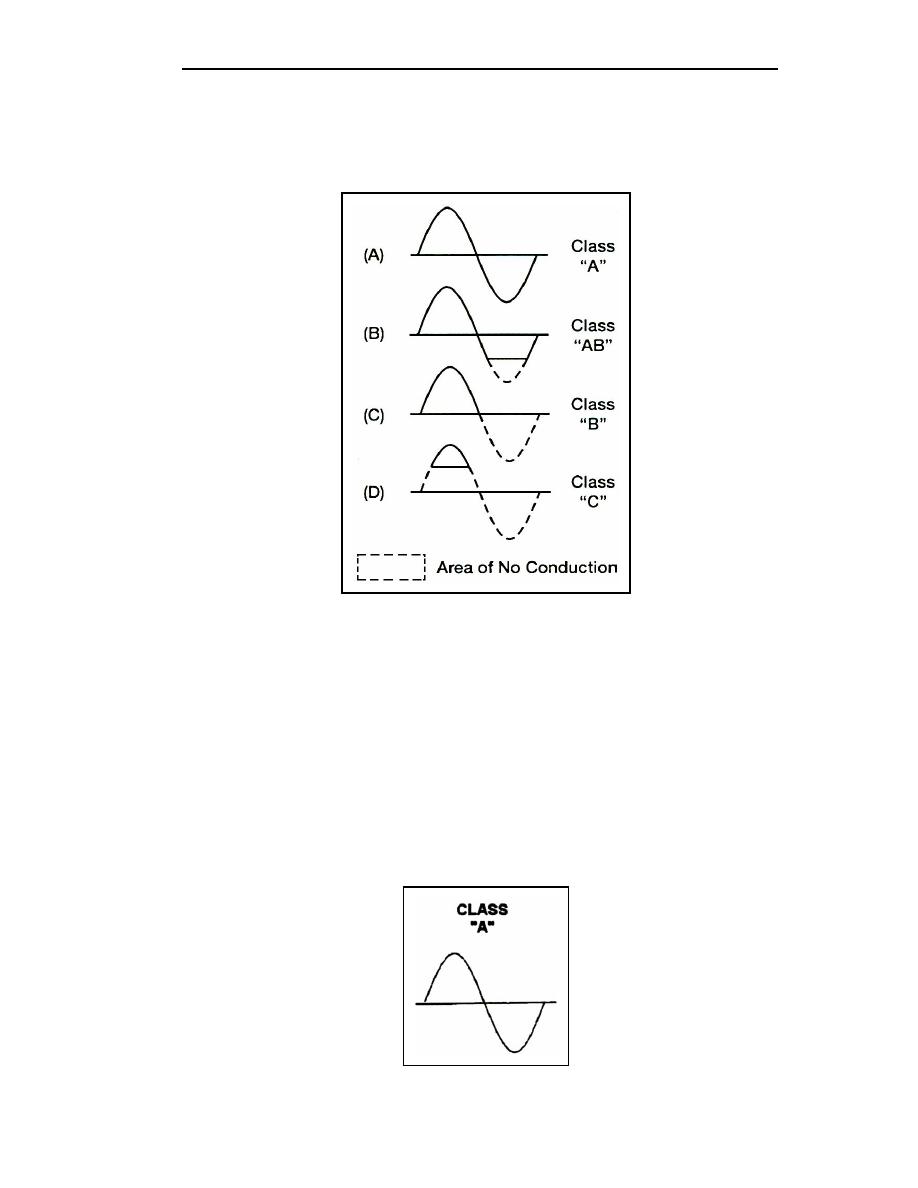
TC 9-62
CLASSES OF AMPLIFIER OPERATION - determined by the portion of the
input signal for which there is an output. There are four classes of amplifier
operations: class A, class AB, class B, and class C.
CUTOFF - occurs when the base-to-emitter bias prevents current from flowing in
the emitter circuit. For example, in the PNP transistor, if the base becomes
positive with respect to the emitter, holes are repelled at the emitter-base
junction. This prevents current from flowing in the collector circuit.
SATURATION - occurs in a PNP transistor when the base becomes so negative,
with respect to the emitter, that changes in the signal are not reflected in
collector-current flow.
within the limits of cutoff and saturation. Biasing an amplifier in this manner
allows collector current to flow during the complete cycle (360 degrees) of the
input signal, thereby providing an output that is a replica of the input but 180
degrees out of phase. Class A operated amplifiers are used as audio and RF
amplifiers in radio, radar, and sound systems.
2-40
TC 9-62
23 June 2005


 Previous Page
Previous Page
